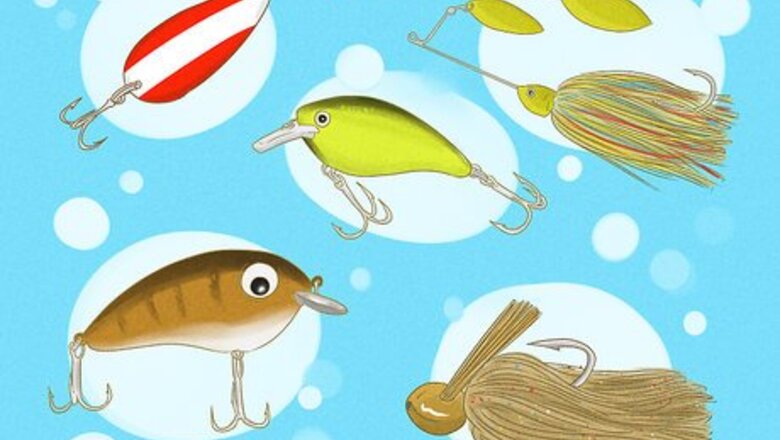
views
Choosing Lures
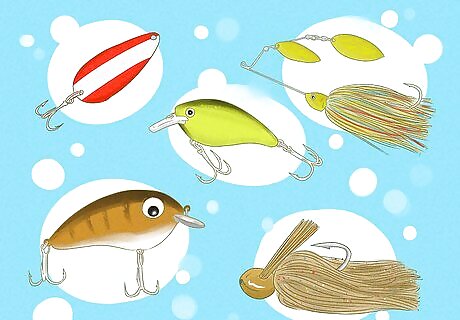
Get a variety of lures to experiment. The primary purpose of fishing with a lure is to imitate as best as possible the movements of a fish's natural prey. Consequently, there is an enormous variety in the materials, colors, and shapes of fishing lures, each suited for a particular scenario, or fish. There's no such thing as "the best" lure and colour combination to use, so it's good to get a variety and see what works best for you and the fish you're trying to catch. The type and size of lure is generally determined by the fish species that you're targeting. Although there is no defined role for the various lures, the idea is to match a lure as well as possible with a fish's natural prey. For example, a bass usually feeds on tiny crayfish, making it less likely to bite a large fish-shaped lure. However, bass tend to be attracted to more active lures like chatterbait.
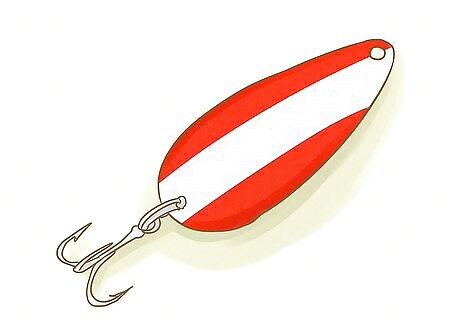
Try spoons. A spoon is a lure which resembles the head of a spoon without the handle. This shape causes the lure to flutter in the water as it sinks, which then creates the illusion of an injured bait fish. The red devil, a red and white spoon, is very popular. The red stripes look like blood to a hungry game fish. Because spoons resemble shads, they work best in waters where shad are plentiful.

Try jigs. Jigs are probably the most common lure used in both fresh and saltwater fishing. They consist of a weighted head and a tail made of feathers or plastic, which is used to conceal a hook. Often a piece of live bait or oil-based scent will be attached to the hook to make the lure even more enticing, though this isn't strictly necessary. Oil-based scents are an effective option because they won't clump or ruin the feathers.
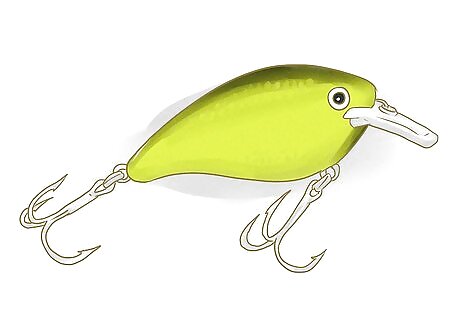
Try a crankbait lure. One of the most recognisable of fishing lures, a crankbait is usually made of plastic or wood and used primarily to fish for bass. This lure often features a bill on the front that looks a lot like a duck. Generally, the bill on the crankbait lure allows it to dive to a pre-defined depth, allowing anglers to work a particular column within the water. Many crankbaits come with additional features such as trailing hooks and rattlers.
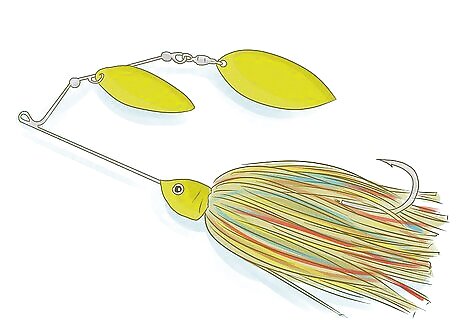
Try spinning lures. A spinner is a type of jib with a blade that turns, pulling the lure through the water. Spinners and spoons are usually made of metal and either wobble or spin through the water in the same way as real fish and a spinner is a bit of a hybrid between crankbaits and spoons. Often, these lures feature a large single hook which is covered by some form of trailing material as well as a metal blade which spins in the water as the lure is being retrieved. These lures generally cause vibrations which can induce a fish to strike. Look for a V-shaped spinning lure. These make more vibrations, which may be more effective in attracting fish.
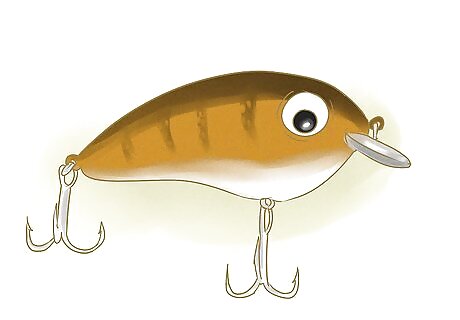
Try a plug. Plugs are made of wood or plastic and work in a number of ways, skimming along the surface of the water, trailing in mid-water, or by trolling deep along the bottom. It's a versatile and very useful variety of lure to add to any angler's collection. If you're fishing at night, look for a lighted version of this lure.
Lure Techniques

Learn to walk the dog. One of the most useful and effective lure techniques is called "walking the dog," because it resembles the type of wrist motion you might have while taking Rover for a stroll. For this technique, you'll use a surface lure with a weighted rear end. Cast your lure and point the rod tip toward the water at a 45 degree angle. Move the rod tip downward to a 90 degree angle in a jerking motion. Reel up the slack in the line, then jerk the line again. Move the rod slowly at first, and then gradually increase the speed to copy the movement of a bait fish swimming away.
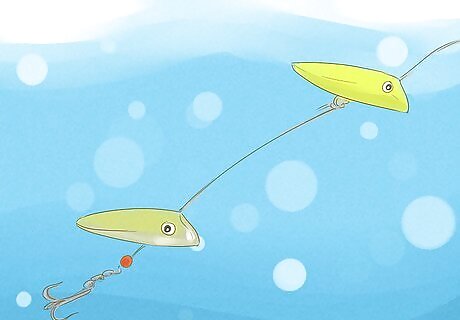
Use a lure to mimic the behavior of the bait fish. Mimicry is one of the most advanced lure techniques for experienced fishermen to use. It's a subtle and sophisticated way of catching fish that requires the use of two pop lures or plugs for the best effect. Tie one lure behind the other on a monofilament leader and cast your lure out deep. Move the tip of the rod in a twitching motion, varying the speed in multi-directions, attempting to mimic the behavior of live fish. Use your wrist to keep the line relatively taut, jerking the lure around and varying your movements.
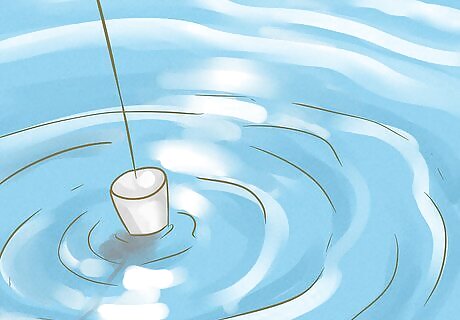
Learn to dead stick. Use a surface or topwater lure to imitate the behaviors of an injured or otherwise vulnerable bit of prey. If fish are hesitant, using this technique can get even cautious fish to start biting. After you cast, leave the lure still in the water until the ripples go away, pausing and counting to 10 before you make a movement. Move the rod tip, causing the lure to move in place very gently, then remain still for another brief period. Repeat brief movement of the rod tip, moving the lure in place. The movements should look erratic and sinking, but easy to catch.
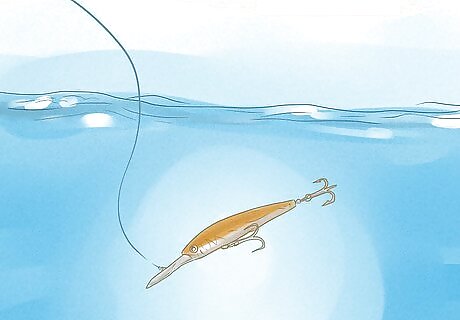
Learn to dive. Use a crank bait or a diving plug lure to learn to drop your lure deeper into the water if you want to get into the deep territory where the bigger fish usually remain. Cast your lure and let it remain still while the line starts to sink. Do nothing for several seconds, then slowly start to work the lure beneath the surface by making short retrieval reels, then letting it sink back down. Floating lures, like crank bait or diving plugs, require constant reeling so that they'll stay under the water. Otherwise, they may just float on the surface of the water.
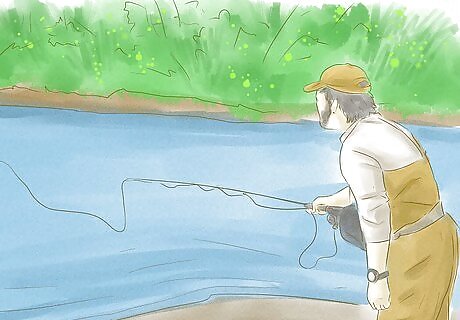
Learn to rip the surface. Use a surface lure to skip your lure across the surface to mimic the behavior of a flying insect or some other kind of prey. This can be especially useful in catching sunfish or other shallow-water freshwater fish. After casting, keep your line still until the ripples in the water go away, then sweep your rod down to the surface of the water. Use the sweeping motion either slowly or quickly depending on the assertiveness of the fish.
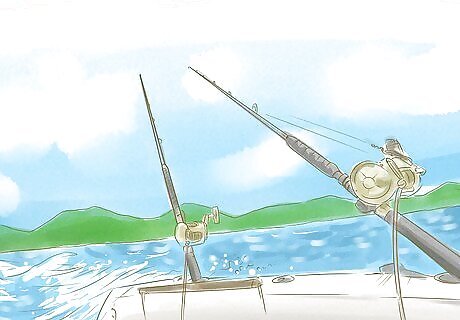
Try trolling. Nothing could be easier on a lazy fishing day than trolling behind your boat with a spoon, plug or spinner lure. It's also extremely effective, mimicking the behavior of a traveling bait fish, minding its own business and covering a great amount of ground. All you've got to do to troll a lure is cast behind a moving boat and wind the line in slowly as you move. Generally, you'll want to use the trolling motor and go extremely slowly. Another way to do is to let the lure sink down to the desired depth. Don't reel in the line as the boat drives forward. This will keep it at the right depth.
Pro Lure Fishing Tips

Don’t overdo it. Fishing is a lot like chess, a game of quiet movements and subtlety, not herky-jerky nonsense. Most beginners jerk the line around too much. It's important to reel in very slowly, using calm and gentle movements on the line. If you're not catching anything, start with slow movements and then gradually quicken your movements. If you get a bite immediately stop reeling in and very slowly move the lure left and right until the bobber goes under the water. The second it does yank very hard and forcefully. You do this because when the fish bites it and you yank, the fish will get the hook caught in its lip and you can then reel it in.
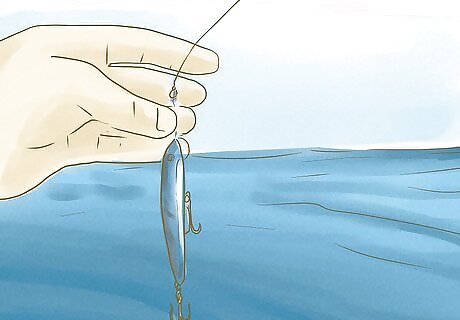
Match the color to the water. Using the "right" color of lure is generally determined by water clarity. Murky water and dusk or night fishing requires bright-colored lures more easily seen by fishermen and fish alike. White and red lures are common in these conditions, while clear water conditions would call for more muted or naturally occurring colors, like brown, blue, black, and green. The right color to use can also depend on where you're fishing. A bright, patterned lure might be best to attract saltwater fish, but that same lure could scare freshwater fish away.
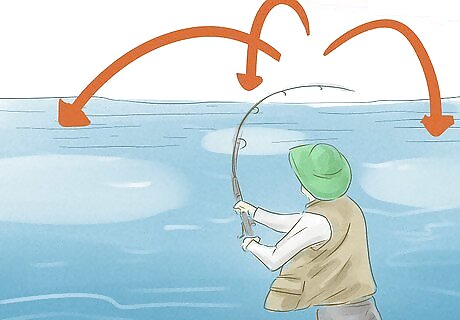
Don't keep casting in the same area. When you're lure fishing, it's very important to move around and avoid playing out a particular area. Fish aren't as stupid as you think, and they'll start recognizing the lure eventually, making it less effective. If you get a lure spit back, it's time to move elsewhere. Work the whole body of water and the different depths until you find the fish. Also work the lure at different speeds and change up the action.

Keep your lures clean. When you're fishing, as you reel your lure back in, take a few seconds to check the status of the lure and clean it up if necessary. In certain fishing conditions, lures can get gunky with weeds, twigs, and other debris, making them less effective at attracting fish and less effective at looking real. Make sure your lures are clean and ready to go before you recast.
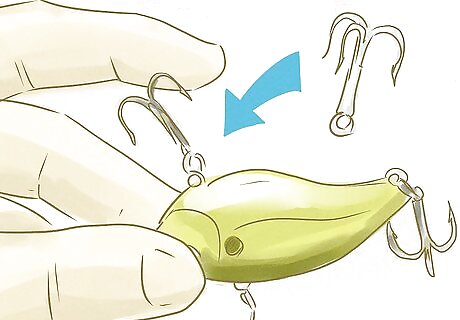
Learn to care for your lures. It's important to keep the hooks of your lures as dry as possible when not in use to prevent rusting. Rusted hooks need to be replaced as soon as possible, as they become greatly weakened and break when you need them the most. You can buy replacement hooks at bait shops and most outdoor supply stores.
















Comments
0 comment